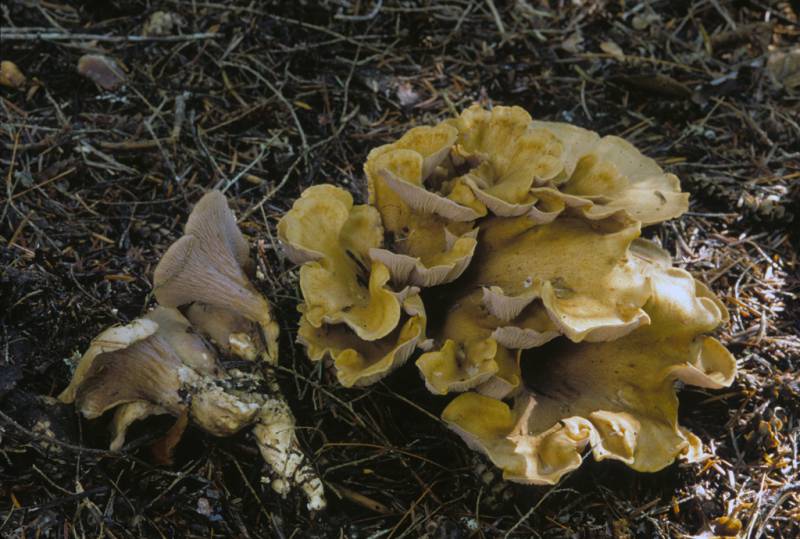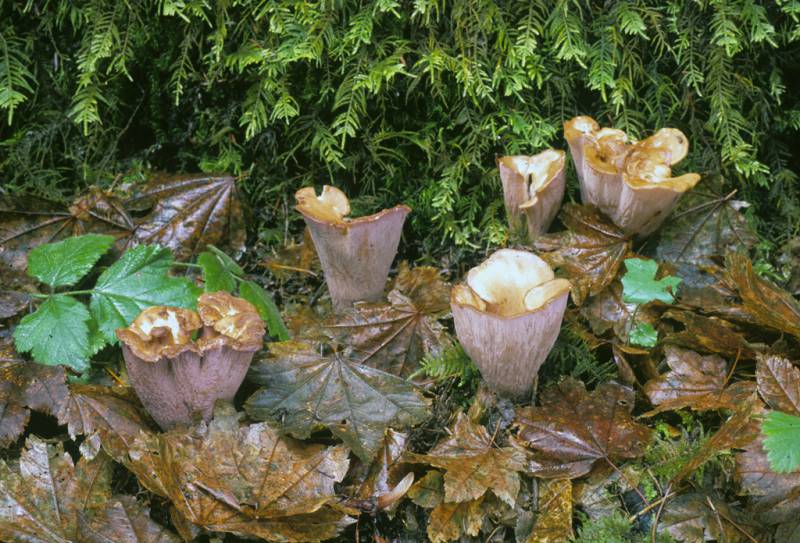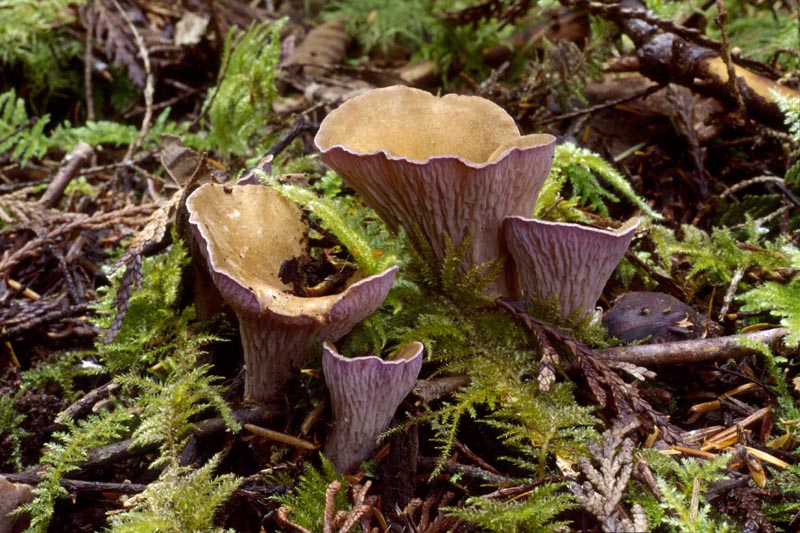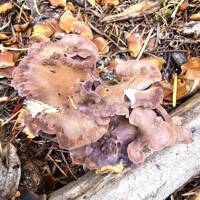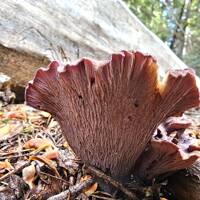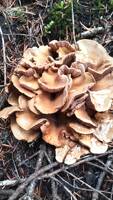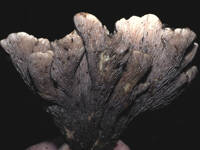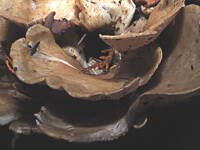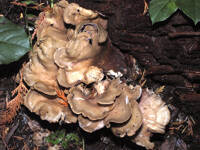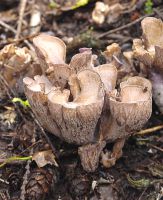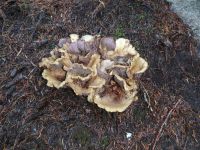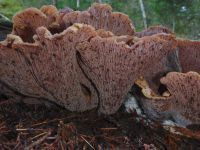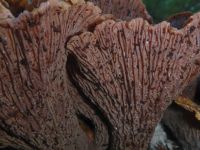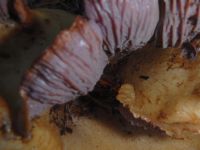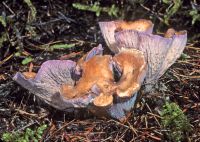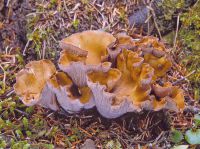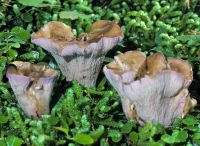Distribution: Western
Habitat: Conifer forests
Conservation Status: Not of concern
Edibility: It is considered a choice edible but, unlike the other chanterelles, it often is insect-infested unless you find it very young.
The purplish, veined fertile surface combined with the flat to funnel-like tan cap and growth in clusters make it distinctive. Polyozellus multiplex also is clustered and has a veined fertile surface, but is entirely dark purplish, blue, or black. G. clavatus is less abundant than many mycophagists would like, but is not rare, occurring throughout the conifer forests of western and northern North America.
It is considered a choice edible but, unlike the other chanterelles, it often is insect-infested unless you find it very young.
Spores are ocher-brown; growth up to 7 inches; cap diameter up to 6 inches. Can only be distinguished from Gomphus crassipes microscopically. Some Cantharellus and Craterllus species may be tinted violet but are generally much smaller and have white spores.
PNW Herbaria: Specimen records of Gomphus clavatus in the Consortium of Pacific Northwest Herbaria database
CalPhotos: Gomphus clavatus photos

